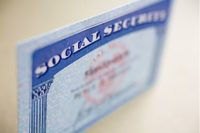On October 7, 2009, the Department of Homeland Security (DHS) finally put the brakes on its 2007 rule to amend its regulations and penalties arising from an employer’s receipt of a “No-Match.” The No-Match letter informs employers that certain information submitted by the employee does not match Social Security Administration (SSA) or DHS records.
In the proposed regulations, DHS defined certain procedures an employer needed to take within a specified time period to acquire a “safe-harbor” when receiving a No-Match letter or risk a criminal charge of hiring an illegal worker. However, under the new DHS leadership, the government rescinded its proposal to amend its No-Match letter regulations in favor of alternative compliance efforts to reduce the employment of illegal workers. Yet these alternative compliance efforts are sure to result in more monetary penalties on businesses and in some cases, loss of an employer’s workforce.
What is a No-Match letter?
No-Match letters are sent by either the SSA or DHS. The most common No-Match letter is sent by the SSA, which informs the employer that the combination of an employee’s name (or other biographical information) and Social Security Number (SSN) failed to match SSA records. While reasons for the No-Match letter can result from a clerical error or name change, oftentimes, the No-Match letter is an indicator that the employer has workers who are unauthorized to work in the United States.
Individuals illegally immigrating to the U.S. resort to purchasing social security cards, identification cards and legal permanent-resident cards, to name a few. The worker then uses his newly purchased social security card to complete the I-9 and W-4 forms. Unless the immigrant assumes the identity of an actual person who does have work legal authorization, SSA will eventually issue a No-Match letter to the employer stating that certain biographical information provided by the employee failed to match SSA records.
Proposed No-Match regulations
DHS proposed the No-Match rule to identify workers who are unauthorized to work in the U.S. through their use of a false SSN or an SSN assigned to someone else. DHS took the position that receipt of a No-Match letter was a warning to the employer that an employee may be an unauthorized alien and therefore ineligible to work for the employer. The No-Match regulations would force the employer to investigate the reason for the No-Match letter. Failure to follow these procedures would result in the presumption that the employer had “constructive knowledge” that certain employees were undocumented workers. Failure to follow the No-Match letter regulations would provide DHS with the ability to prosecute those employers. Of course, diligent employers who followed the No-Match procedures were afforded “safe-harbor” from prosecution for having hired undocumented individuals.
The era of E-Verify and I-9 audits
The current administration rescinded the No-Match rule, but such a rescission is no cause for celebration. In making its review, DHS determined that programs such as the electronic employment verification system (E-Verify) provides better tools for employers to reduce the employment of unauthorized individuals and to better detect the use of fraudulent document usage by employees.
Furthermore, in making its decision to rescind the No-Match rule, DHS felt that it could use its improved worksite-enforcement strategy through the issuance of a Notice of Inspection to better combat against the hiring of ineligible individuals i.e., scaring employers into compliance. A Notice of Inspection is a document provided by the government to employers notifying them that they have been selected for inspections of their I-9s due to investigative work conducted by Immigration and Customs Enforcement (ICE). What this signals to an employer receiving a Notice of Inspection is that ICE has information to believe the company has hired individuals without employment authorization.
The Notice of Inspection process begins when the employer hands over its I-9s, recent payroll records and other information within a 72-hour timeframe. Once ICE obtains the I-9s, its reviews them to ensure they are completed in accordance with the law with deficiencies resulting in civil penalties. ICE also reviews the I-9s to determine whether an individual is illegally working for the employer, which can result in criminal action against the employer in addition to monetary fines.
On July 1, 2009, ICE issued 652 Notices of Inspection to companies across the U.S. In November 2009, ICE issued an additional 1,000 notices across the nation. In comparison, for the entire 2008, ICE only issued 503 of them. More Notices of Inspection are expected by the end of the first quarter in 2010.
One company is already feeling the effects of an I-9 investigation. While the ICE investigation of American Apparel, Inc.’s I-9s began in 2008, in September 2009, the company announced plans to lay off as many as 1,600 workers who appeared to lack proper work authorization. American Apparel stands to lose up to one-third of its workforce, which could have a material effect on the company’s production. While there is no word on whether ICE will fine American Apparel, in July 2009, ICE did fine Krispy Kreme $40,000 after completing its I-9 investigation.
Rescinding the No-Match rule is good news, right?
So why should employers not begin celebrating? While DHS rescinded the No-Match rule, it does not mean that the federal government will not continue to send No-Match letters. The rescission simply means that there is no established protocol employers are required to follow if they receive such a letter. The federal government will continue to use the receipt of a No-Match letter by employers and their actions after such receipt in building a criminal case for knowingly hiring individuals who are not authorized to work. For example, in building its criminal case (and ultimate conviction on Aug. 8, 2009) against Shipley Donuts in Houston, the government not only analyzed the company’s I-9s, they also reviewed the No-Match letters sent by the SSA to Shipley Donuts.
Employers should establish their own No-Match letter protocol
Should an employer receive a No-Match letter, it should take immediate action by looking at its records for any type of clerical error that could give rise to the letter. If no clerical error was made, the employer should inform the employee, in writing, of the receipt of the No-Match letter and ask the employee to go to the appropriate entity and resolve the issue. Employers should also take immediate action if the No-Match letter states the SSN belongs to a deceased person or child.
The government will continue to use the receipt of No-Match letters and the subsequent inactivity of the company in building their criminal cases.
Furthermore, for inquiries by individuals claiming theft of their own identity, employers should request written documentation by the claimant and investigate the matter with the employee to determine if identity theft has occurred.
Employers should also heed warning and obtain an I-9 audit of their current employees. Not only is an I-9 audit a Best Practice by DHS, it will also allow a company to evaluate its liability should they be served with a Notice of Inspection in the upcoming rounds of audits by DHS. Fines for simple technical paper violations on I-9s range from $300 to $1,100 per I-9. Therefore a prudent employer will have their I-9s audited by a third party in order to reduce such large liability for their workforce.
New year, new company policies
Now is a good time for employers to refurbish some of their compliance policies. The best place to start looking for ideas is ICE’s own Best Hiring Practices. In summary, ICE recommends various tools employers can use to protect themselves from hiring undocumented individuals. These include enrolling in the E-Verify program, ensuring only individuals trained in the I-9 process complete the I-9, schedule annual I-9 audits by outside auditing firm, being proactive upon receipt of a No-Match letter or notification of possible identity fraud. The worst thing an employer can do to itself is to do nothing at all.




